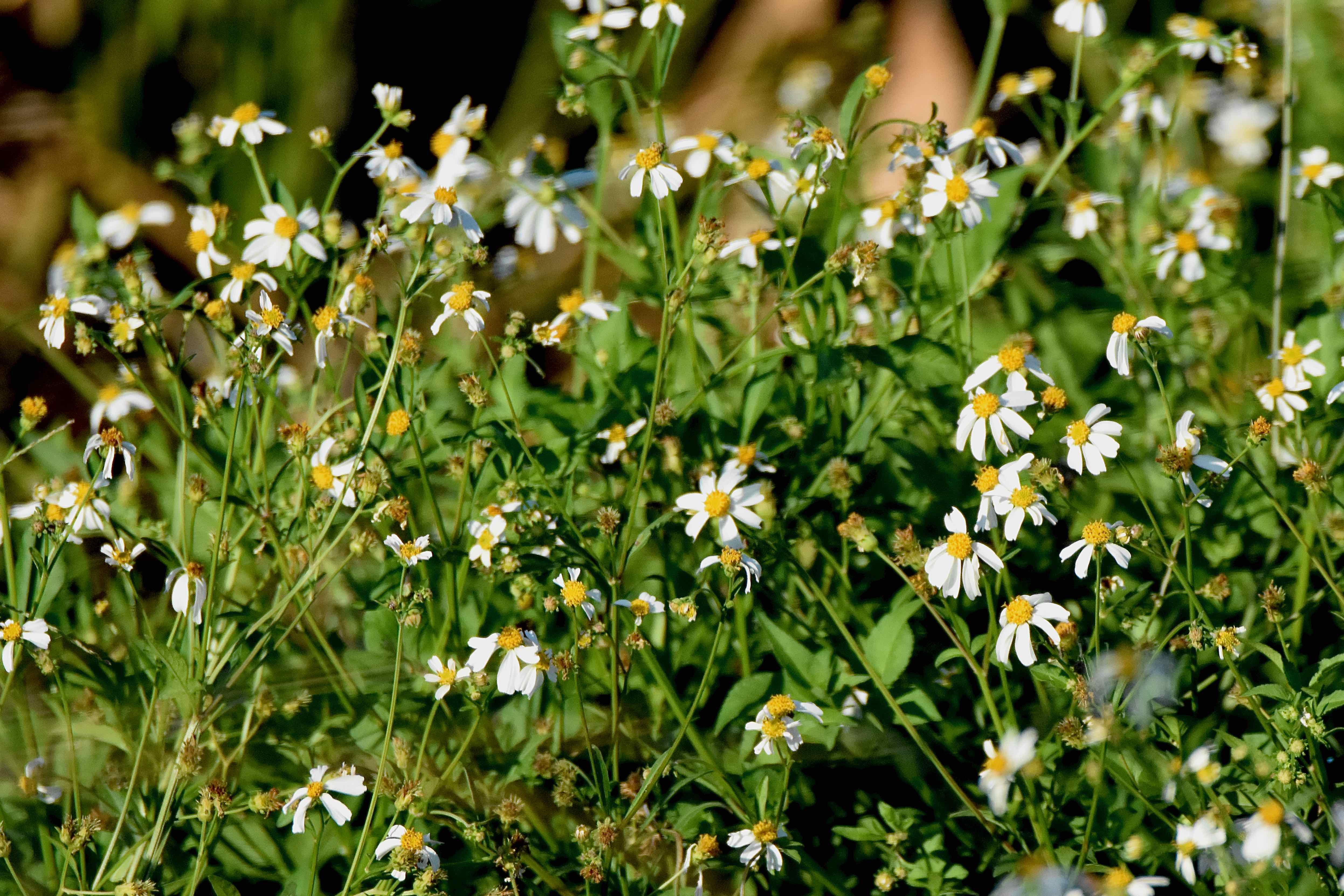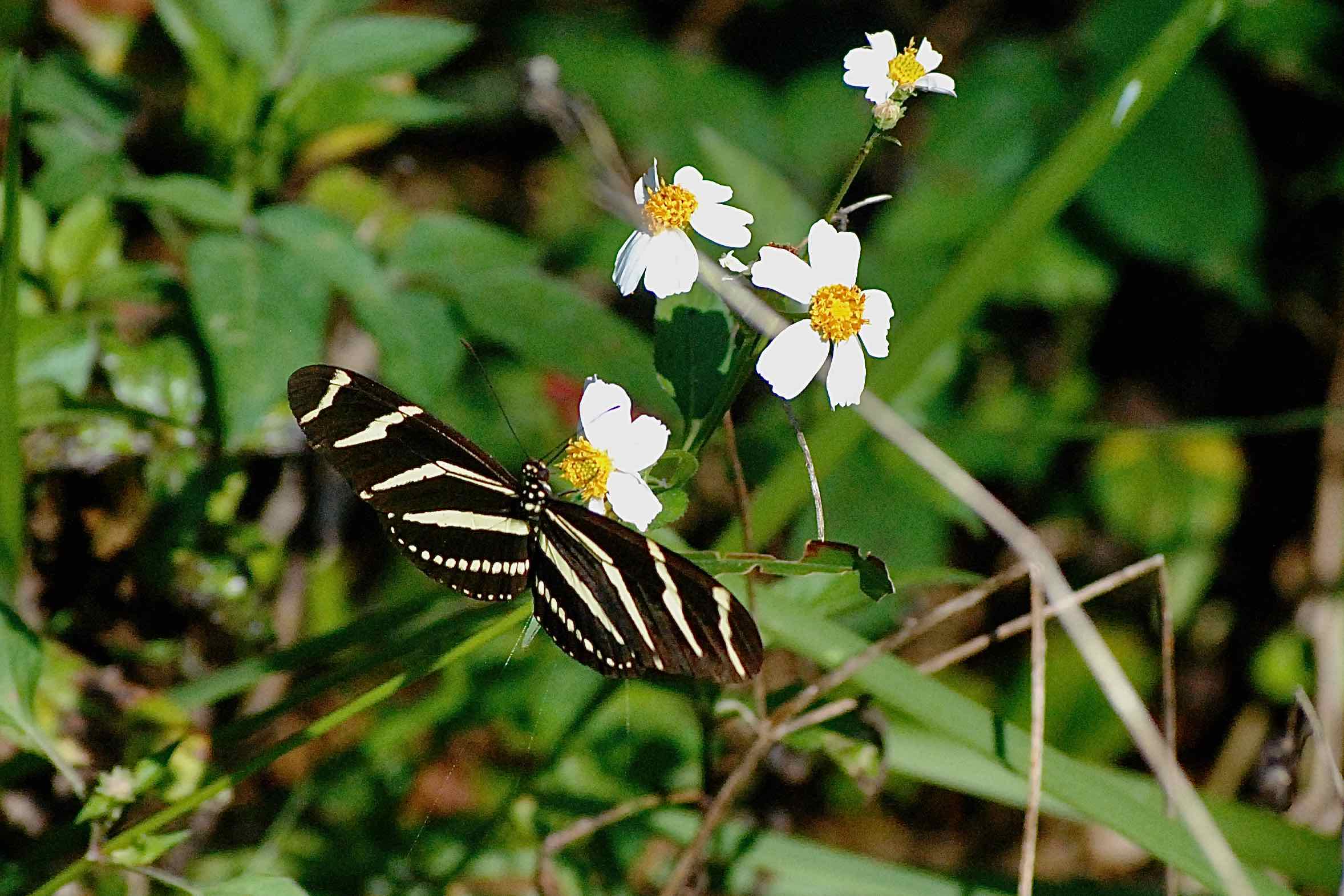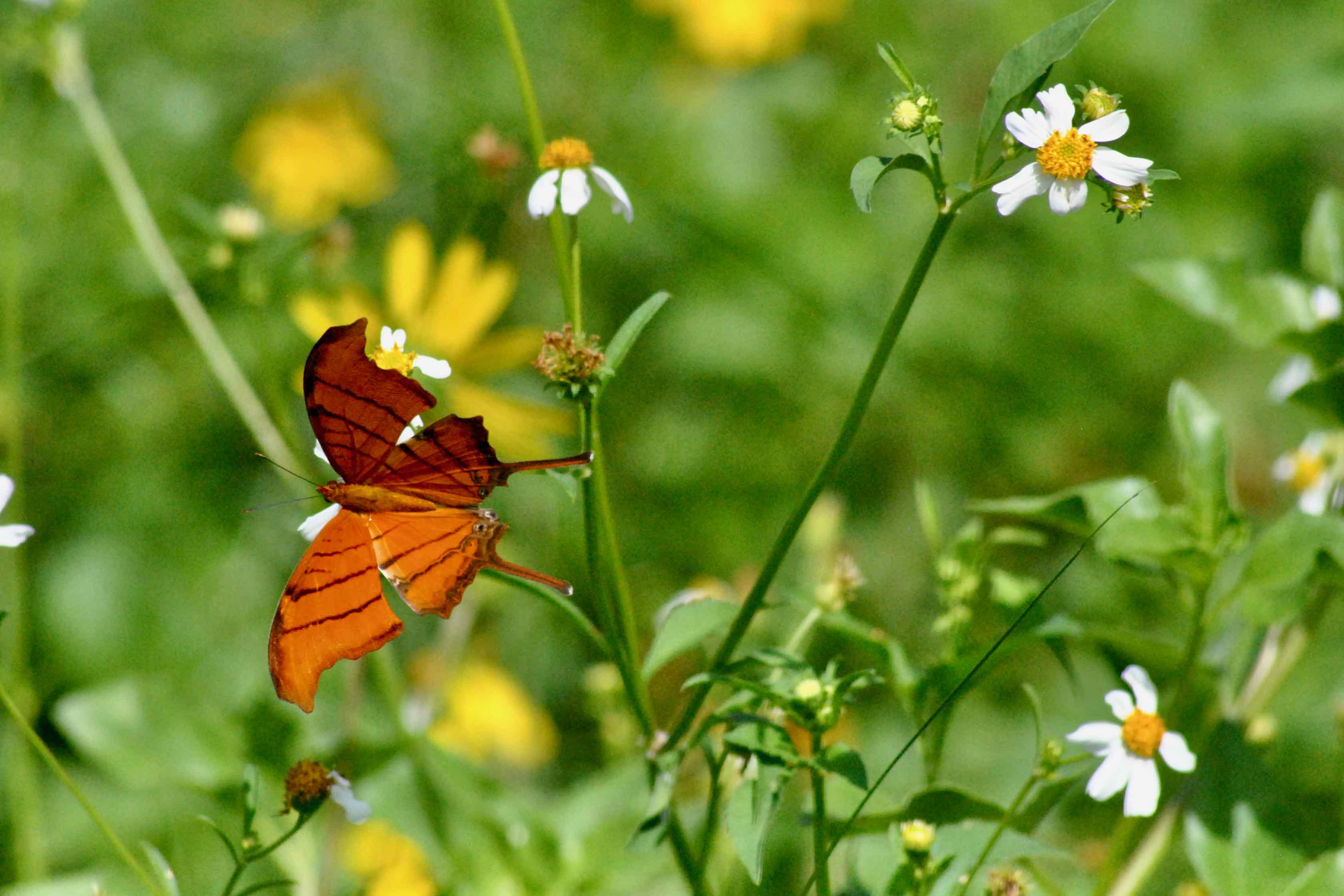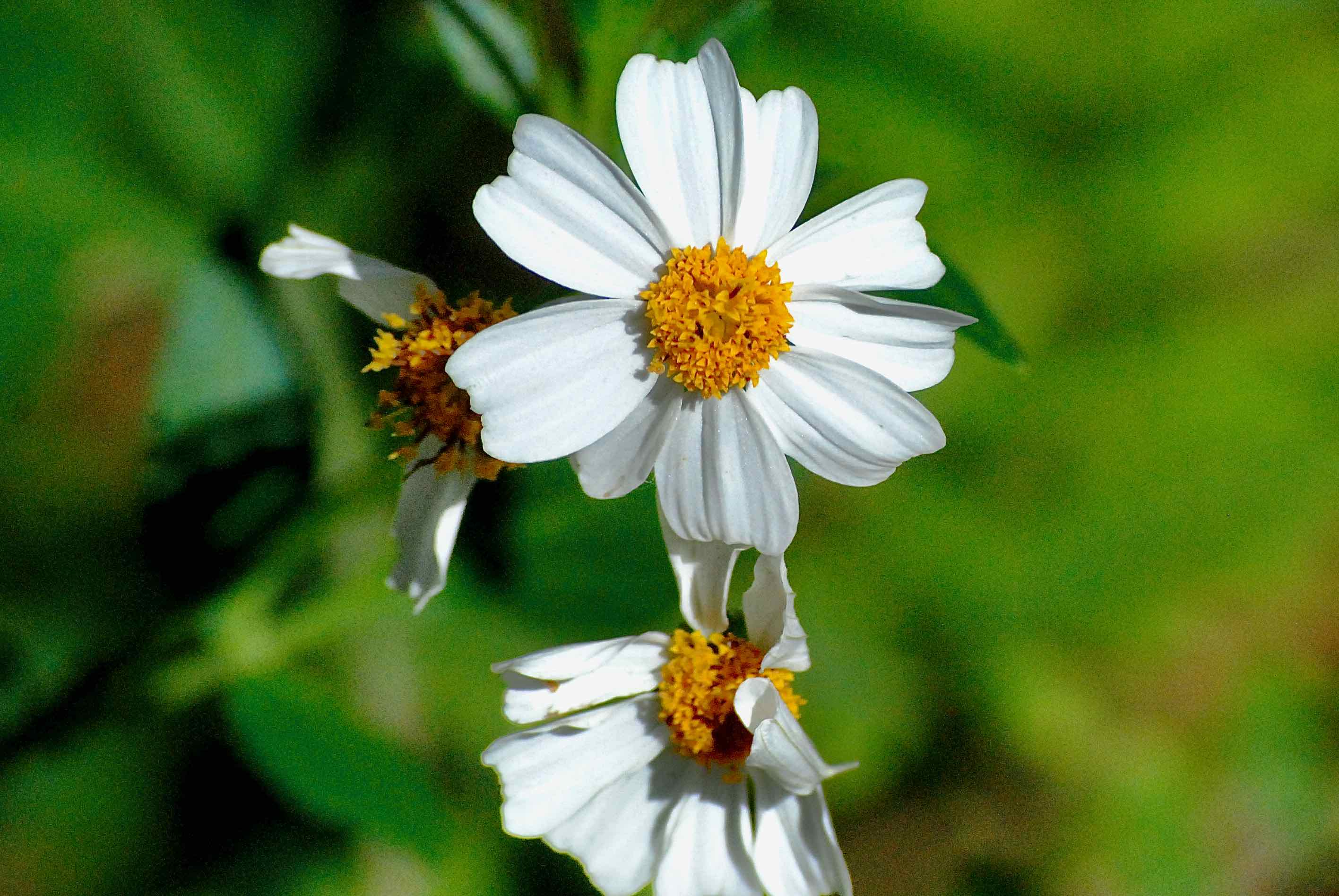
Spanish needles, photographed at the Deerfield Beach Arboretum, Deerfield Beach, Broward County, in March 2014.
This is a nuisance plant, right? A weed. It’s not all that attractive, and its pitchfork-like seeds will stick to your clothes by the dozens, if not more.
But give this Florida native a second look. It deserves it. Spanish needles, Bidens alba, is the second most important nectar sources for honeybees in Florida, and a vital source of food for butterflies — the list of butterflies that dine on it is huge. So huge that some people actually plant the stuff to attract the winged critters to their yards. There is evidence that it could have significant medicinal value. It's also edible.
Spanish needles is found throughout most of Florida — all but few Panhandle counties, in fact — the Southeast U.S. and a few other, scattered states as far north as Massachusetts. But it's generally considered a tropical plant, native of the Caribbean, Mexico, Central America and South America. It's also has become naturalized in most warmer places around the globe, including parts of Africa, Asia and the Pacific islands. In places, it's become an invasive pest. Even here in Florida, some consider it a serious weed because of its prodigious reproductive capacity — a single plant can produce as many as 1,200 seeds in a season — and its ability to take over a patch of ground. It isn't picky about soil types or the amount of moisture it receives, but it does prefer sunny locations. Technically, Spanish needles isn't invasive here, because it is, after all, a native plant.
Spanish needles is an annual or short-lived perennial. It can grow as tall as five feet, but more likely between two and four. When the plant is young, the leaves are simple and opposite each other; as the plant matures, newer leaves are compound, with three or more leaflets.
The leaves are hairy underneath and serrated, or toothed, along the edges. Spanish needles also produces a deep taproot. The flowers are small, perhaps a three quarters of an inch across, with white petals and a yellow center disc. Spanish needles blooms year-round.
Spanish needles serves as a host plant for the dainty sulphur butterfly, but the list butterfly species that feed from its flowers is impressively long, including the zebra longwing, Florida's state butterfly, shown dining in the photo below, center.
The flowers are edible raw; the leaves can be eaten as can the shoots and tips. In South Africa, both the Zulu and Indians cook dried and fresh leaves. In places, it's seen as a famine food. Spanish needles is used in folk medicines to treat cuts, swelling, high blood pressure, jaundice and diabetes. Some research shows it having potential against colon cancer. There are also references to Spanish needles having broad antibiotic potential, including an ability to fight some drug-resistant strains of bacteria. By the way, some research articles refer to Bidens pilosa, which, depending on the reference, is either a very close relative of B. alba or a synonym (a scientific name no longer used) for B. alba.
Other names for Spanish needles include romerillo, pitchfork weed, stick weed, bur-marigold, shepherd's needles, demon spike grass, needle grass, butterfly needles and medical beggar's tick. It is a member of Asteraceae, the sunflower family.
Click on photo for larger image
U.S. Department of Agriculture Distribution Maps
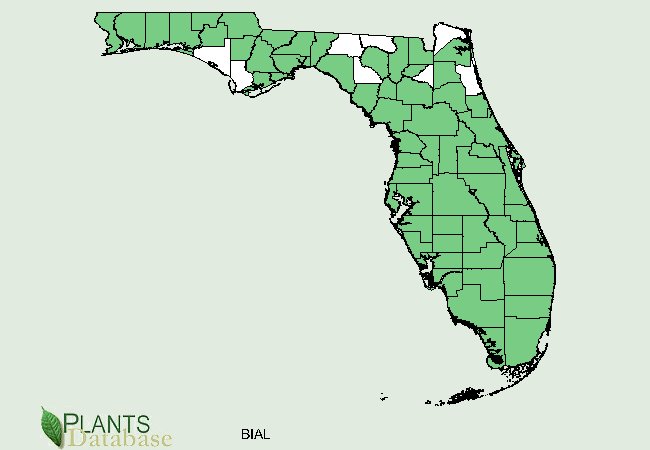

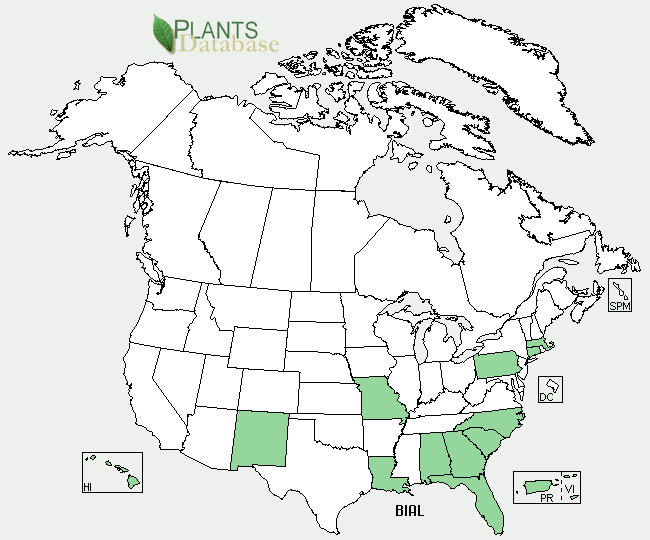
Links for Spanish Needles

